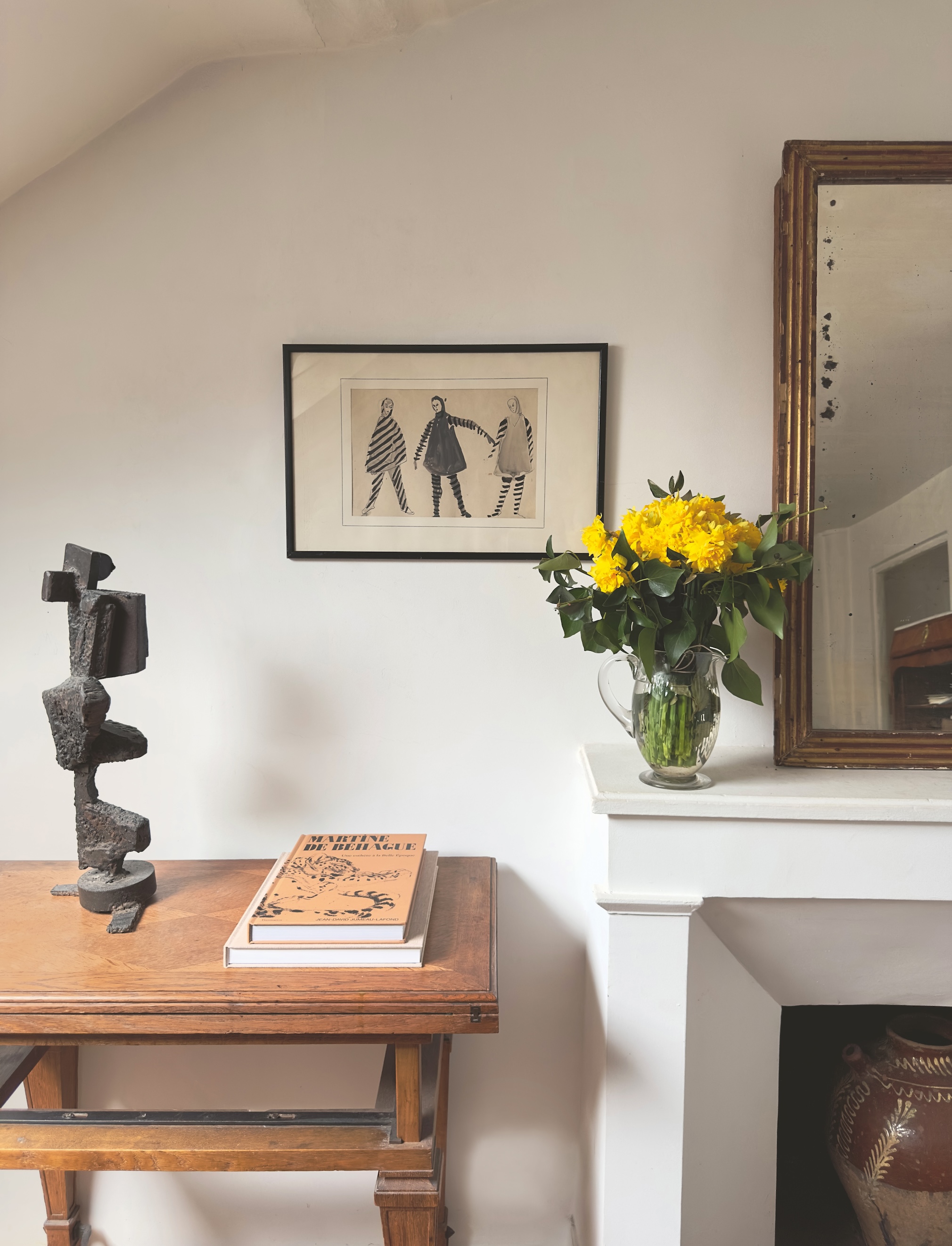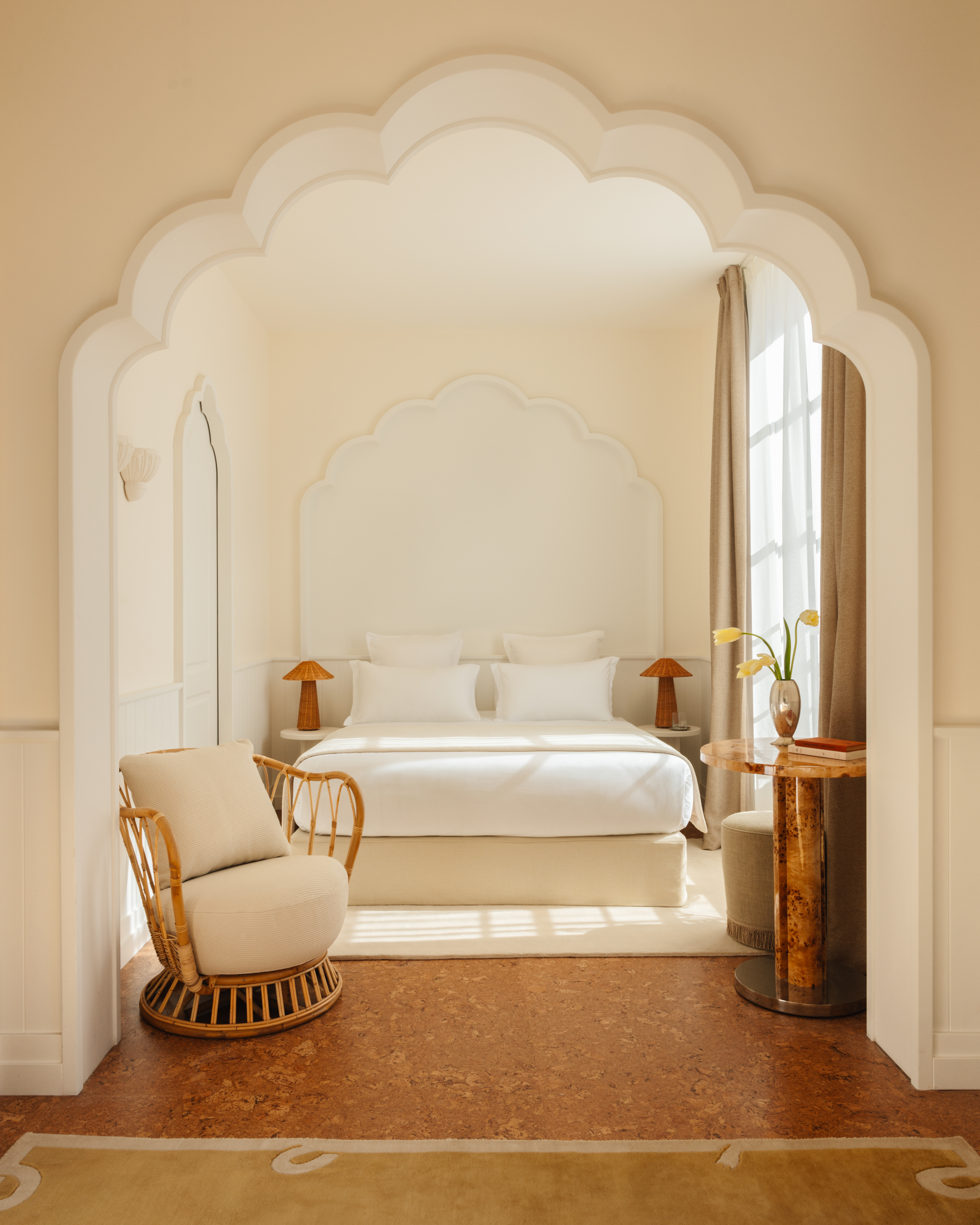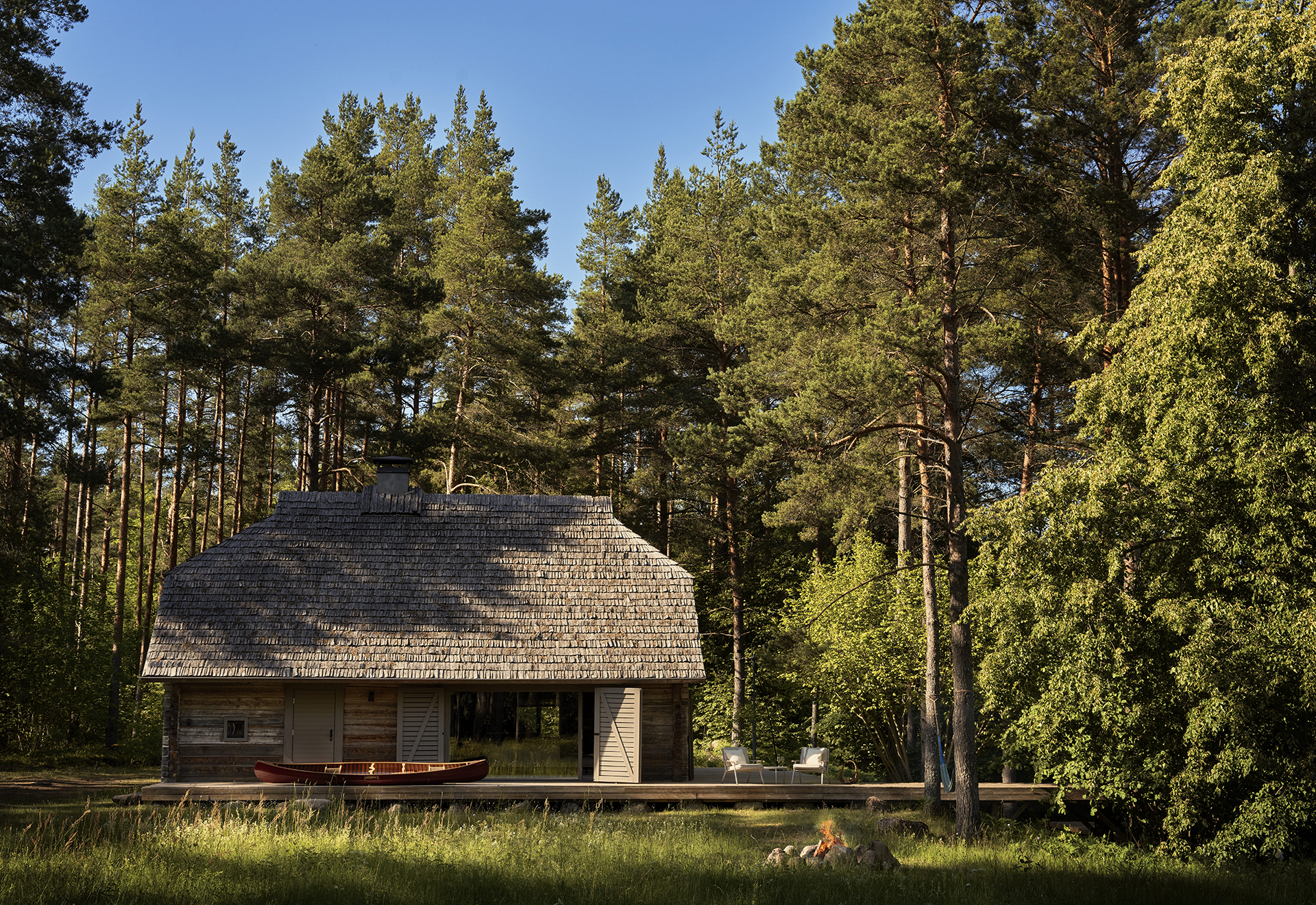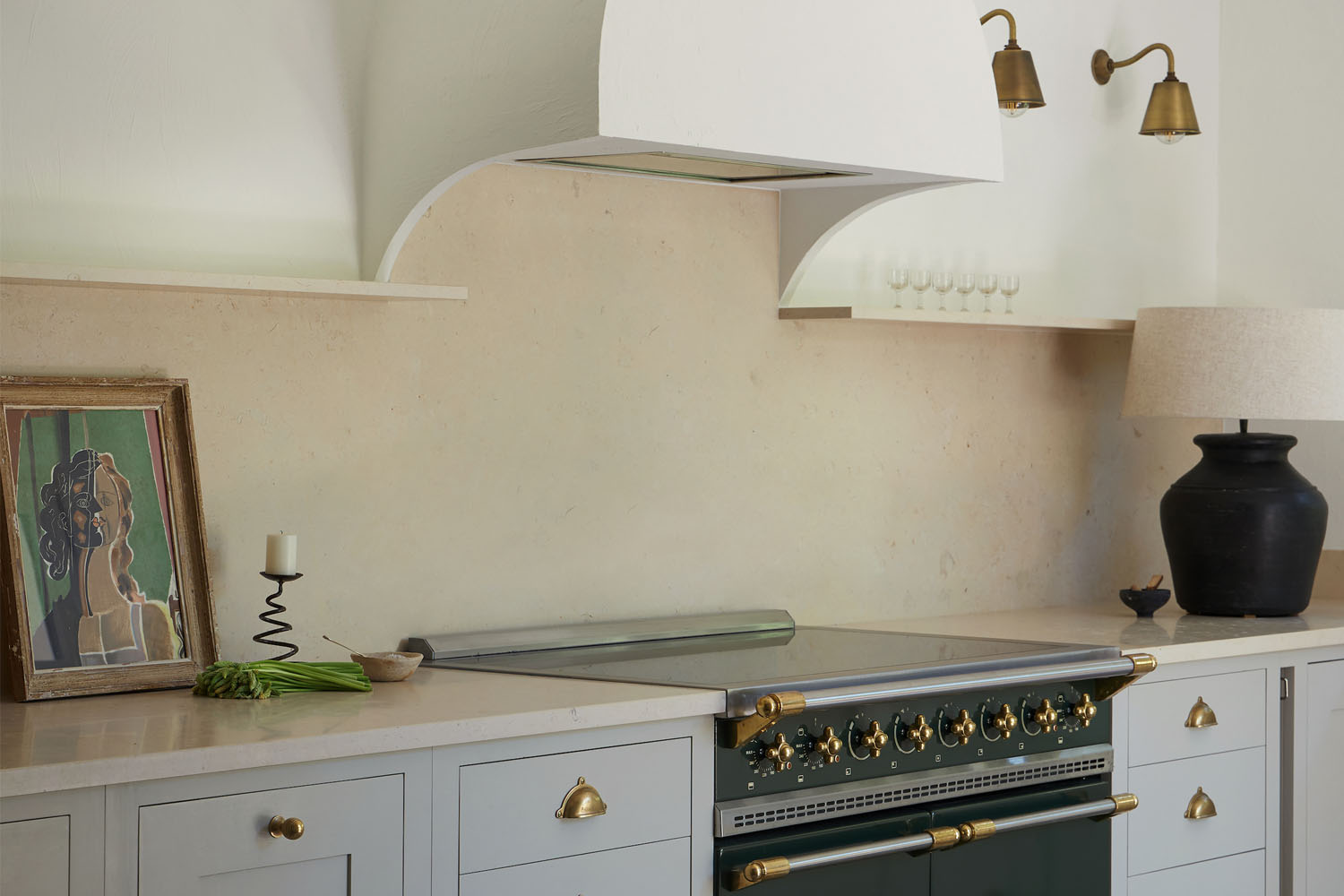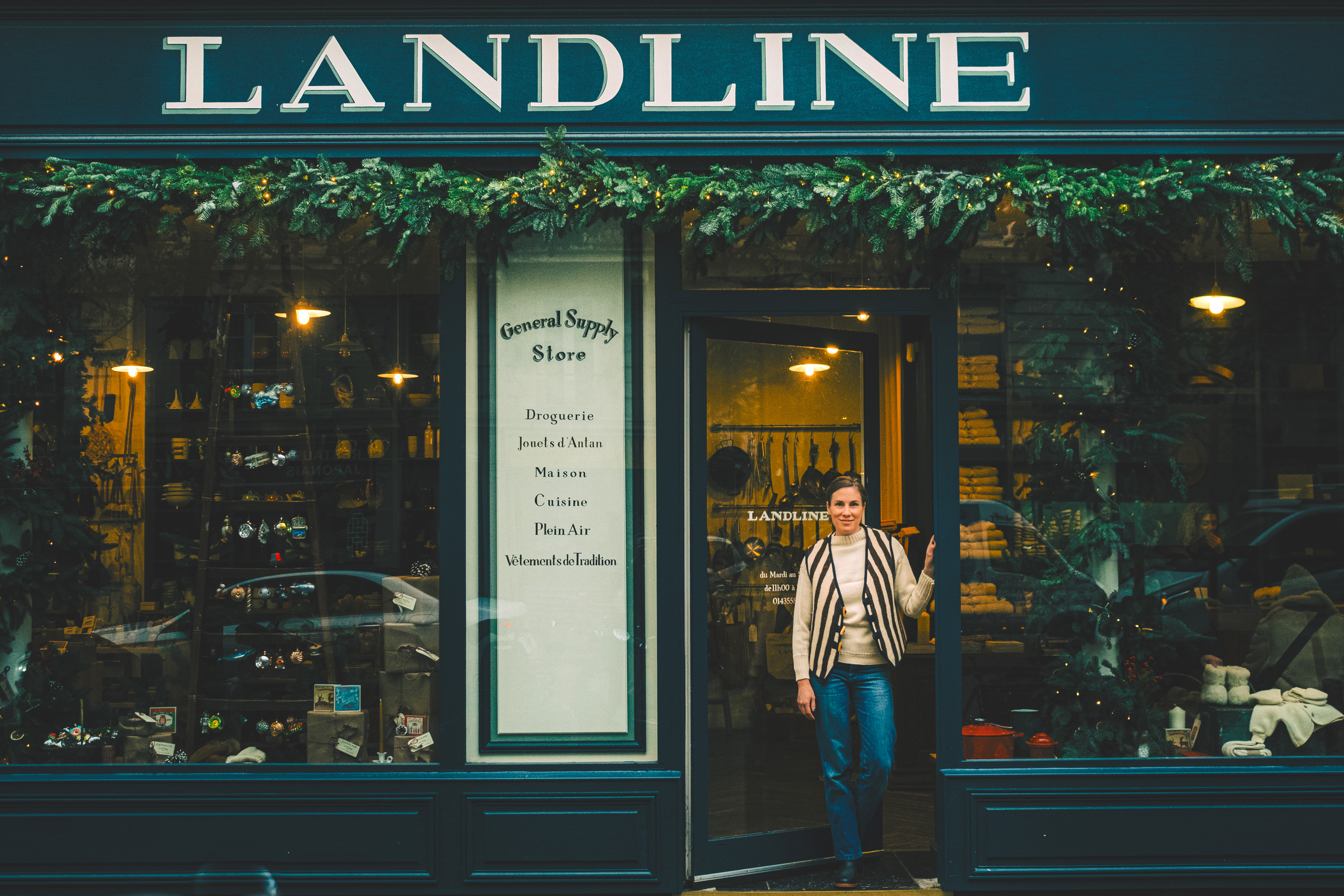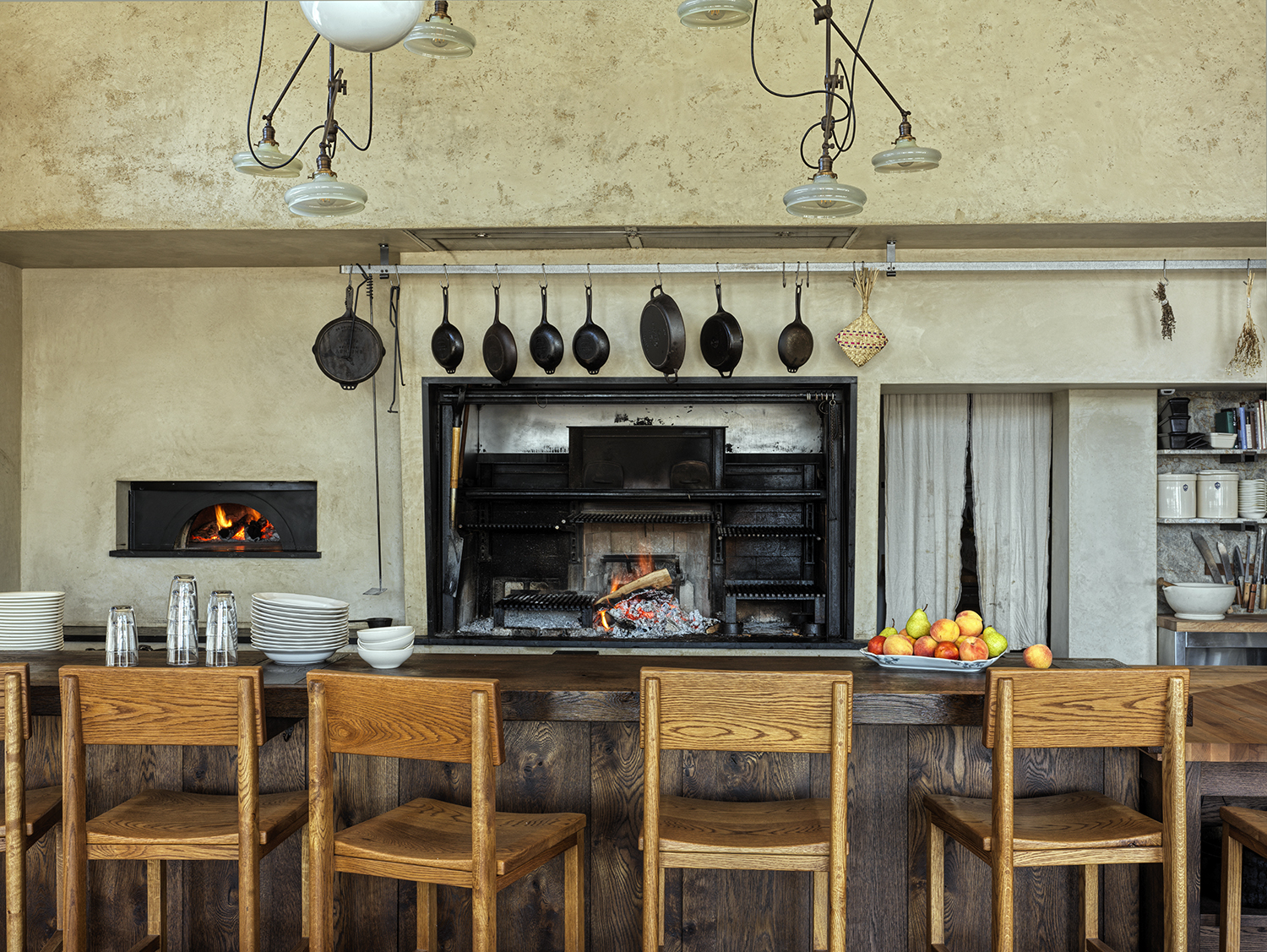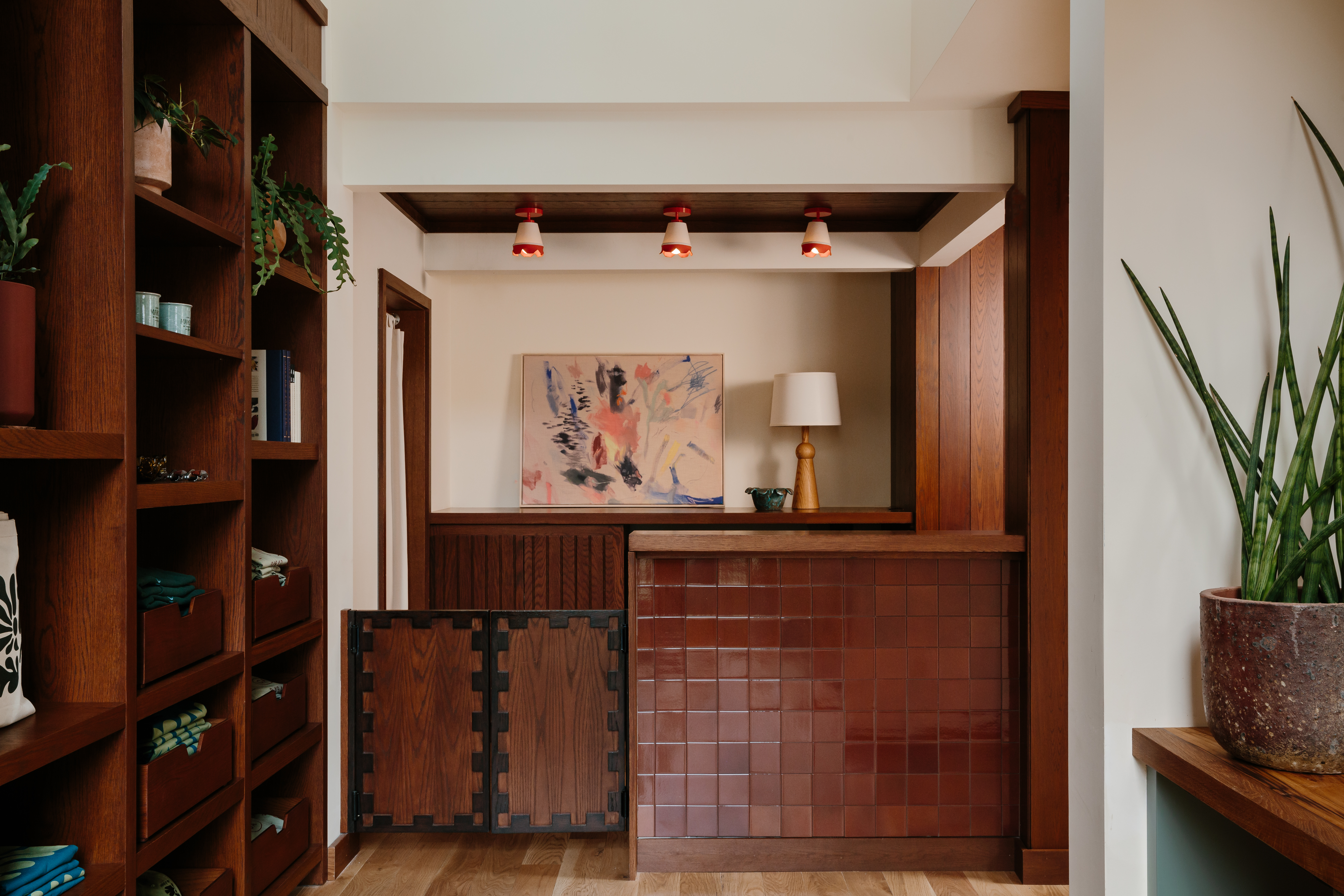L’Heure Vide (The Empty Hour) is a new collection of secluded retreats burrowed into the Cévennes National Park in the south of France. Even reading the name evokes a sense of longing—the promise of rest.
The first property to open its doors is Mas Les Vignes, an authentic Cévenol farmhouse dating back to 1757. Tucked away in a UNESCO world heritage site, it’s a few kilometers from the medieval village of Génolhac. The property is made up of two houses that are connected by an inner courtyard overlooking the garden, which comprise a series of stone-walled terraces leading down to a natural swimming pool. Beyond that is nothing but forested valleys, threaded with meandering streams and waterfalls. We take a tour:


Michel Mulder and Sofie Sleumer are the creative couple behind the concept. (Sharp-eyed readers will recognize them as the former owners of D’Une Ile, which first featured on these pages in 2013.) “In 2012 we moved from Amsterdam to France to create D’une Ile, which took us several years,” explains Michel. “The result was a quirky, elegant, hotel-restaurant in the middle of the Normandy countryside. In 2018 we sold it to the Parisian restaurant, Septime, and went for a trip around the world in our Defender for two years.”

Over the course of that trip, the couple came up with the slow-growing idea for L’Heure Vide. “Our approach is hotel-like,” explains Michel. “But instead of rooms in a building we offer a collection of houses in nature. There will be a stock of the finest natural wines and delicatessen in every house, a central concierge service, even daily cleaning, if desired.”

In the 1700s, Mas Les Vignes was the only vineyard in the area. “It’s history, the buildings, and the surrounding terrains have largely been preserved,” Michel explains. When they purchased the property, the farmhouse was structurally sound, but not to their taste, so the interiors were sensitively remade in a way that “would do more justice to the building.”
Adjacent to the farmhouse was a second building: a stable and cellar that has been converted into additional accommodation (the property sleeps eight). This was much less straightforward. “Unfortunately, the south-east exterior wall and the south gable wall were in bad shape and had to be reconstructed,” says Michel. “All the floors had to come out, and we wanted to turn the cellar into a bathroom, so we had to dig down into the rocks to lay a foundation. And of course we had to take the roof off as well.” They were left with just three dry-stone walls standing.



